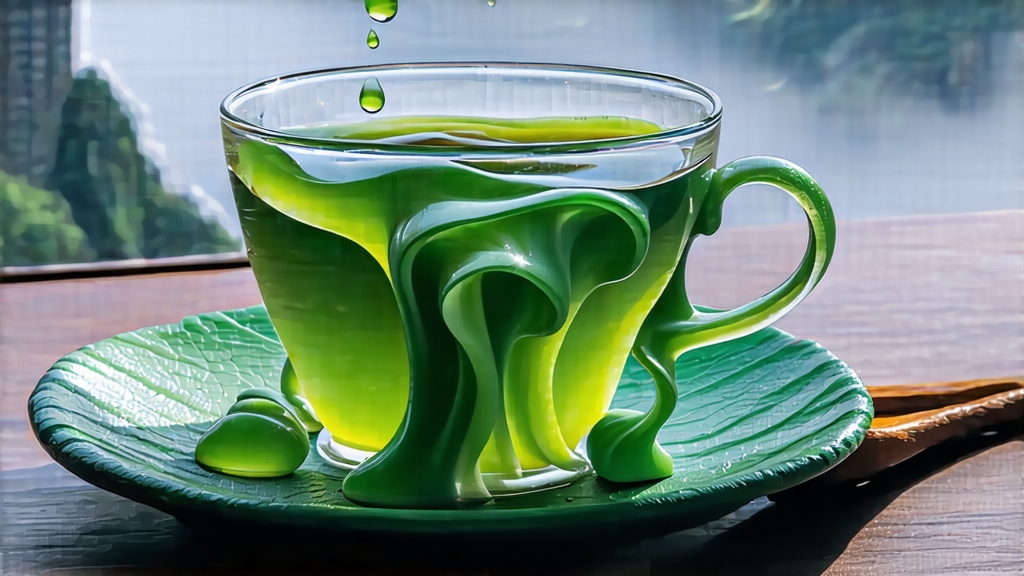
Tucked between the mist-laden peaks of Dongting Mountain in Jiangsu Province and the vast, wave-whispering surface of Lake Tai, Biluochun—literally “Green Snail Spring”—has captivated Chinese tea lovers since the late Ming dynasty. Legend claims a tea picker ran out of basket space and tucked fresh shoots between her breasts; the warmth released an intoxicating fragrance that startled local monks, who christened the tea “Scary Fragrance.” The Kangxi Emperor, touring the region in 1699, found the name inelegant and rechristened it Biluochun for its snail-shell curl and spring harvest. Thus an imperial tribute tea was born, carried south to north in bamboo-lined chests cushioned by orange peels to preserve its famously delicate aroma.
Despite its petite leaf, Biluochun is one of China’s Ten Famous Teas, commanding prices that rival top-grade Longjing. Its micro-terroir is tiny: only the fog-shrouded slopes of Dongting’s East and West mountains, where acidic, well-drained purple soil meets a daily temperature swing of 8–10 °C. The lake’s evaporative moisture blankets the bushes in a natural shade cloth, slowing photosynthesis and concentrating amino acids, especially L-theanine, which gives the tea its signature sweetness. Growers interplant tea with fruit trees—peach, plum, apricot—whose root systems share mycorrhizal fungi with the camellia bushes and whose blossoms contribute volatile esters that the leaves absorb like living blotting paper. No other Chinese green tea is so deeply influenced by companion cropping; walk through a Biluochun garden in April and the air is a cocktail of petal, leaf, and lake vapor.
The cultivar itself is a localized clone of the small-leaf Camellia sinensis var. sinensis, selected over centuries for early budding and high fragrance. Two sub-varietals dominate today: the traditional “Xiao Ye” (small leaf) and the slightly hardier “Da Ye” (big leaf) introduced in the 1980s to extend the picking window. Purists insist only Xiao Ye from West Mountain core zones deserves the ancient name, yet both share the spiral shape that is the tea’s visual signature.
Plucking begins when the overnight temperature stabilizes above 10 °C, usually between the Qingming and Grain Rain solar terms. The standard is one bud plus an unfolding leaf no longer than 2.5 cm—what locals call “copper wire, spiral shape, white down.” A skilled picker gathers just 500 g of fresh leaf in a day, enough for barely 100 g of finished tea. The leaf must reach the village workshop within two hours; oxidation waits for no one.
Withering is done outdoors on raised bamboo trays for 30–60 minutes, depending on humidity. The goal is not moisture loss but activation: leaf edges turn limp, cell walls begin to leak, and grassy volatiles give way to floral precursors. Next comes fixation in a drum pan heated to 180 °C. The master’s bare hand plunges into the spinning leaves for three-second intervals, judging by touch the exact moment enzymes are denatured. Under-fixation leaves a raw pea note; over-fixation bakes the silkiness out forever. The tea is then moved to a 70 °C pan for the first rolling. Unlike the sideways press of Longjing, Biluochun is rolled into a tight spiral using a wrist-flick motion that took me three seasons to mimic. The leaf must be warm enough to plasticize yet cool enough to retain downy hairs; the sound should resemble rain on tin—an auditory cue masters listen for.
A second, cooler rolling follows, then low-temperature drying at 50 °C until moisture drops to 6 %. The entire process consumes four hours, start to finish, and cannot be paused. When done correctly, the leaf resembles a tiny jade snail, silvery fuzz intact, weighing one-fifth of its plucked mass.
To brew Biluochun internationally, equipment must respect its fragility. A tall, clear glass of 200 ml is traditional in Suzhou teahouses because it allows foreigners to watch the “tea dance”: the spirals sink, unfurl, and rise again as gases escape. Use 3 g of leaf—about a heaping teaspoon—for each 200 ml. Water should be freshly drawn and cooled to 70 °C; anything hotter scalds the down and releases bitter quercetins. Pour along the glass wall to avoid direct impact, fill to